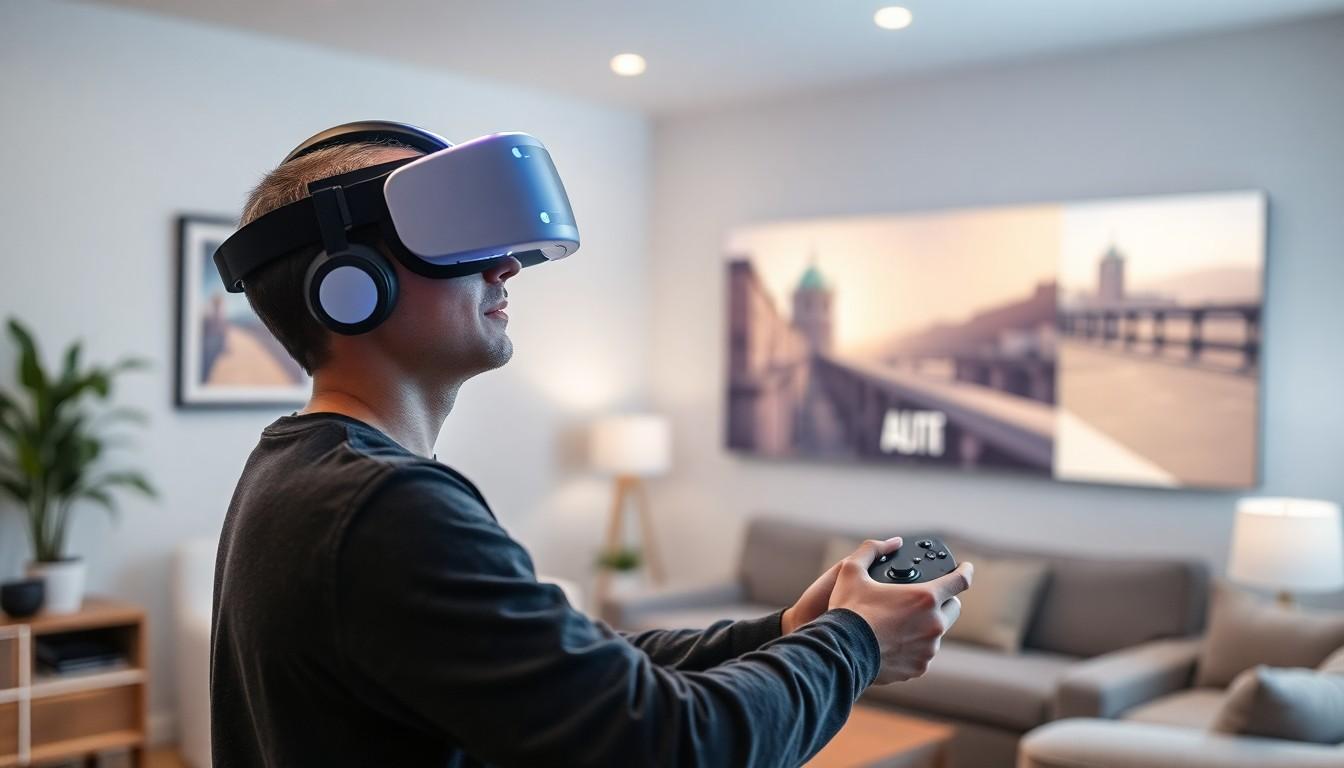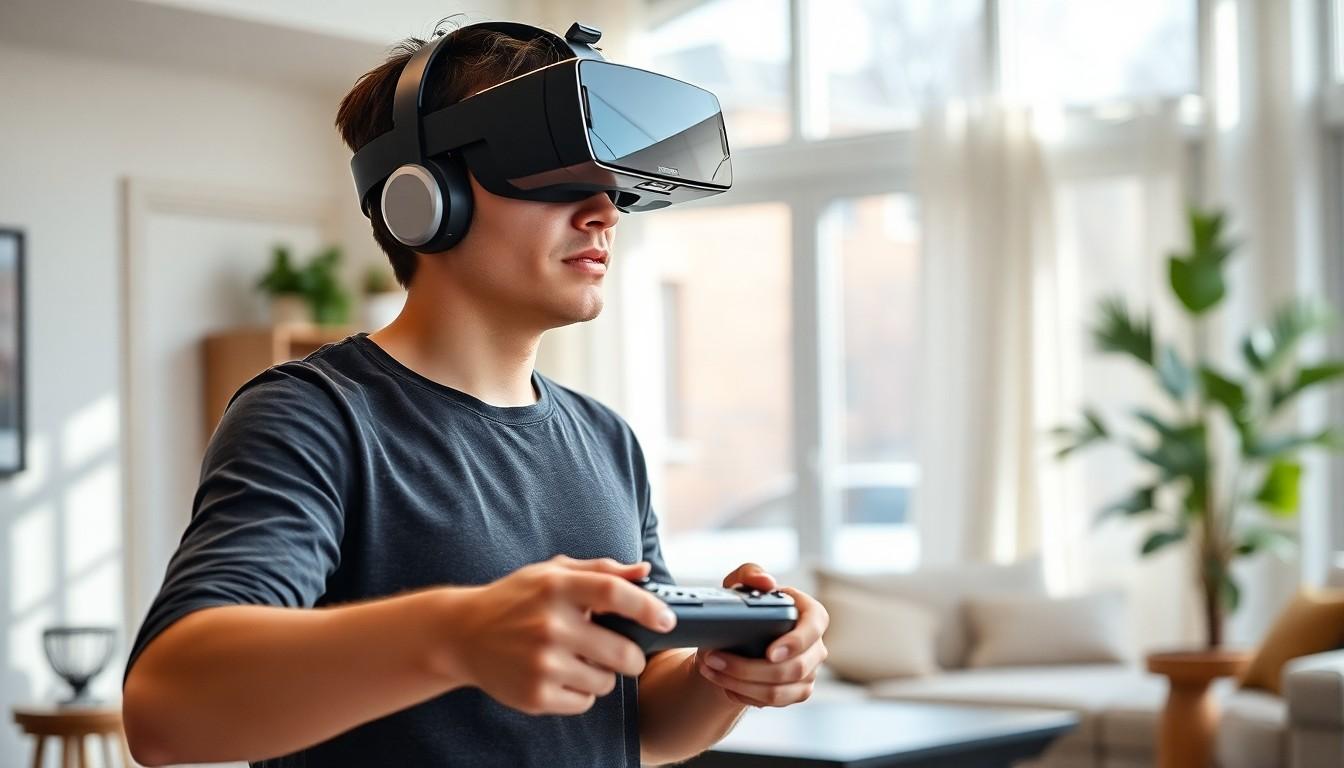Imagine stepping into a world where the lines between reality and fantasy blur, where you can battle dragons in your living room or solve mysteries while dodging your cat. Augmented reality gaming is here to make that dream a reality, and it all starts with the right hardware. With a headset that transports players into immersive worlds, a controller that feels like an extension of their own hand, and motion sensors that track every move, the adventure is just a heartbeat away.
Augmented Reality Gaming Hardware Includes a Headset, a Controller, and Motion Sensors.
Augmented reality gaming combines real-world environments with digital elements. Effective hardware plays a crucial role in creating this immersive experience.
What Is Augmented Reality Gaming?
Augmented reality gaming integrates digital content into the real world in real-time. Players interact with their environment while engaging with virtual elements. This technology enables experiences like Pokémon GO, where users find and catch Pokémon in their actual surroundings. The blend of graphics and reality enhances gameplay, making it more engaging and interactive. Developers utilize AR platforms to create diverse gaming options, appealing to a wide audience.
Importance of Hardware in Augmented Reality
Hardware is vital for optimal augmented reality experiences. Quality headsets provide immersive visuals that enhance gameplay. Controllers offer intuitive interaction, allowing users to manipulate virtual objects seamlessly. Motion sensors track movement, adding realism as players navigate their environment. All components work together to create a cohesive experience. Without reliable hardware, the potential of augmented reality gaming diminishes, making high-quality devices essential for full enjoyment.
Headsets in Augmented Reality Gaming

Headsets play a crucial role in augmented reality gaming, providing immersive experiences by overlaying digital graphics on real-world environments. They engage players by merging the real world with virtual elements.
Types of AR Headsets
There are primarily two types of AR headsets: tethered and standalone. Tethered headsets connect to external devices like computers or consoles, offering powerful graphics and extensive features. Examples include the Microsoft HoloLens and the Magic Leap One. Standalone headsets operate independently, integrating all necessary technology within the headset itself. These devices, like the Oculus Quest series, provide portability and ease of use, making them popular for casual gamers.
Key Features of AR Headsets
AR headsets come equipped with several key features that enhance the gaming experience. High-resolution displays ensure clarity in graphics and reduce motion blur during fast-paced gameplay. Advanced field-of-view specifications allow players to see a wider area, thereby improving immersion. Built-in microphones and speakers facilitate interactive gameplay and social experiences. Furthermore, eye-tracking technology adapts virtual elements based on player focus, adding depth to interactions. Sophisticated tracking systems ensure accurate real-world interaction, making gameplay more fluid and engaging.
Controllers for Augmented Reality Gameplay
Controllers play a crucial role in augmenting the gaming experience. They enable players to interact seamlessly with both digital and physical elements during gameplay.
Types of Controllers
Various types of controllers enhance augmented reality gaming. Handheld controllers offer precision and mobility, allowing users to navigate virtual environments effortlessly. Motion-sensing controllers track movement in real time, enabling intuitive gestures for a more immersive experience. Touch controllers provide tactile feedback, making interactions with digital objects feel realistic. Some systems incorporate voice recognition technology, allowing players to issue commands verbally. Combining these different styles helps meet diverse gameplay needs, catering to different preferences and enhancing engagement.
Impact of Controllers on User Experience
Quality controllers significantly impact user experience in augmented reality gaming. They facilitate interaction fluidity, allowing for swift transitions between reality and virtual elements. With responsive controls, players experience greater immersion, creating a more satisfying gaming environment. Controllers that support haptic feedback deliver tactile sensations, enhancing emotional connection to the gameplay. Additionally, ergonomic designs aid comfort during prolonged sessions, preventing fatigue. Ultimately, the right controller enhances enjoyment and influences gameplay success, making it an integral component of augmented reality hardware.
Motion Sensors in Augmented Reality
Motion sensors play a vital role in augmented reality gaming. These devices track a player’s movements and translate them into digital interactions within the game. By accurately capturing body motion, they ensure a seamless integration of the virtual and real worlds.
Role of Motion Sensors
Motion sensors enhance player engagement significantly. They allow for real-time tracking, providing precise feedback on movements. Utilizing accelerometers and gyroscopes, they detect changes in position and orientation. These sensors enable immersive experiences by allowing gamers to interact physically, creating depth in gameplay. In popular games like Pokémon GO, players rely on motion sensors for navigation in their environment. Quality motion sensors contribute to the overall authenticity of the augmented reality experience.
Advancements in Motion Sensor Technology
Advancements in motion sensor technology drive innovation in augmented reality. Newer sensors feature enhanced accuracy and faster response times. Methods such as infrared tracking improve reliability in various lighting conditions. Furthermore, the integration of machine learning algorithms helps adapt to individual playstyles. Companies like Microsoft and Apple continually refine their sensor technologies, enhancing user experiences. These technological strides enable gamers to explore richer environments and engage more dynamically with virtual elements.
Transform Gaming Experiences
The future of augmented reality gaming hinges on the synergy between headsets, controllers, and motion sensors. Each component plays a pivotal role in crafting immersive experiences that blur the lines between digital and physical worlds. As technology advances, gamers can expect even more refined interactions and enhanced realism. Investing in high-quality hardware not only elevates gameplay but also unlocks the full potential of augmented reality. With the right tools, players can embark on unforgettable adventures that transform their gaming experiences into something truly extraordinary.

